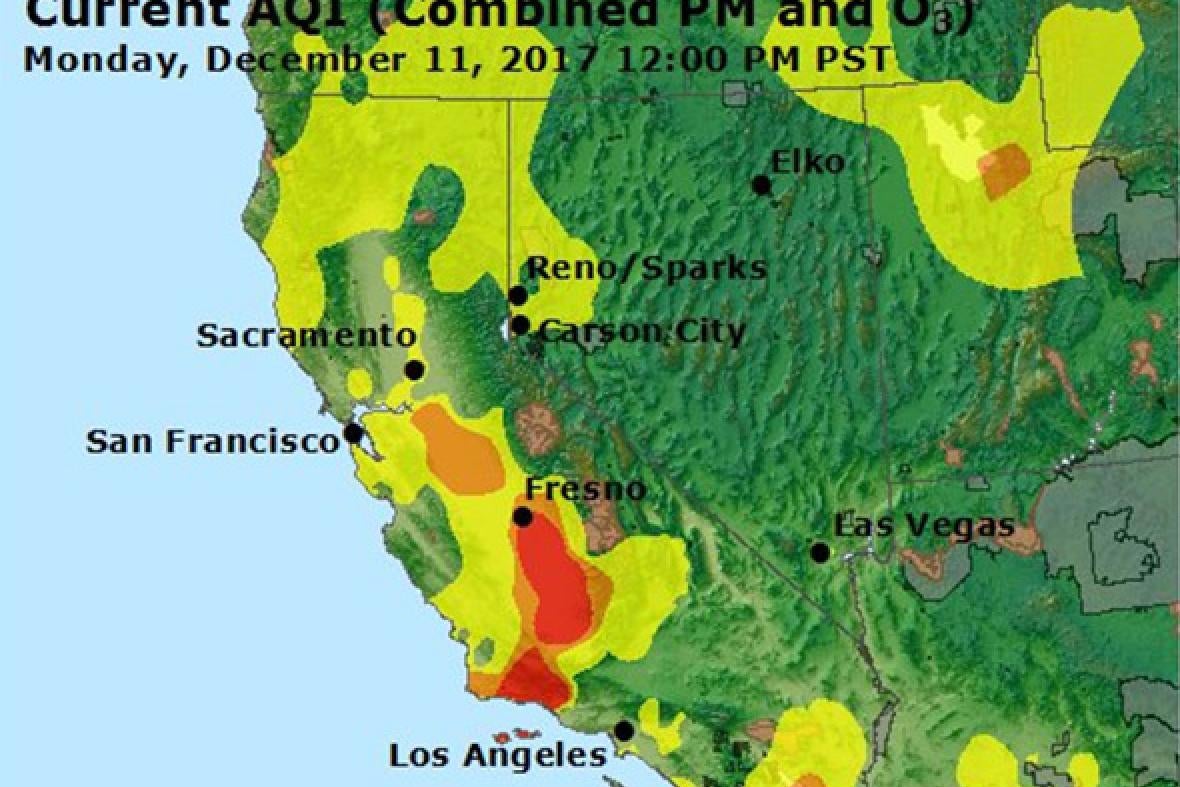The Environmental Protection Agency’s air quality map of California is pretty scary looking right now: Rapidly disappearing green blobs show the last areas where the air is clear, while yellow, orange, and even red bubbles metastasize just north of Los Angeles, bringing irritants and toxic particles with them. The Rorschach image is the result of several wildfires ongoing in California, namely the record-breaking Thomas wildfire, which has been raging north of L.A. for a week and has already burned an area the size of New York City. In its wake, the Thomas blaze has left behind a plume of smoke—and the potential for health hazards that comes with it. Thanks to the prevailing winds, meteorologists say the air pollution is only going to get worse before it gets better.

Air quality maps are like a game of golf—the lower the score, the better the air. Right now, large swaths of Ventura and Santa Barbara counties, from the central valley down to the Pacific coast, have been assigned air quality index scores over 100, triggering public health warnings across the state. Fresno’s AQI, for example, was hovering around 119, so officials have labeled the air “unhealthy for sensitive groups,” which include children, pregnant people, and the elderly. Santa Barbara, meanwhile, has an AQI of 188, and the air has been labeled unhealthy for everyone.
But what’s actually so harmful about the wind? And what does someone living under the blanket of smoke actually do about it?
Smoke carries microscopic particles that, above a certain density, can harm human health. The biggest particles can cause irritation to your eyes and nose, which is unpleasant, but the smallest of these particles do a lot worse. Called PM2.5, these minuscule particles can be one-thirtieth the width of a human hair or smaller, allowing them to be inhaled deep into the lungs. There, they can embed themselves in the tissues and exacerbate all kinds of diseases. People with asthma and other respiratory diseases are the first to notice—their breathing becomes even more labored, often triggering a trip to the emergency room—but other people are at risk, too. When the air quality is bad enough, even healthy people can suffer wheezing, phlegm, and inflammation.
Unfortunately, there’s not much that can be done to clear the air. Cleansing the airspace over California will require time and the right winds. Right now, the opposite is happening, with winds coming in from the ocean and pushing the Thomas wildfire’s smoke up and over the state. But people can still take precautions. The EPA recommends people stay indoors as much as possible, with the windows closed and air conditioners, air filters, and air cleaners blasting. If you have to drive, it’s advisable to recirculate the air in the car by pushing that button in the center console of a car partially enveloped by a curving arrow. For people who elect to go outside, it’s recommended that physical activity is reduced. (Don’t go jogging outdoors right now.) And if you’re going to be out for a long time, wear a real particulate protection mask, because a surgical paper mask does absolutely no good.
